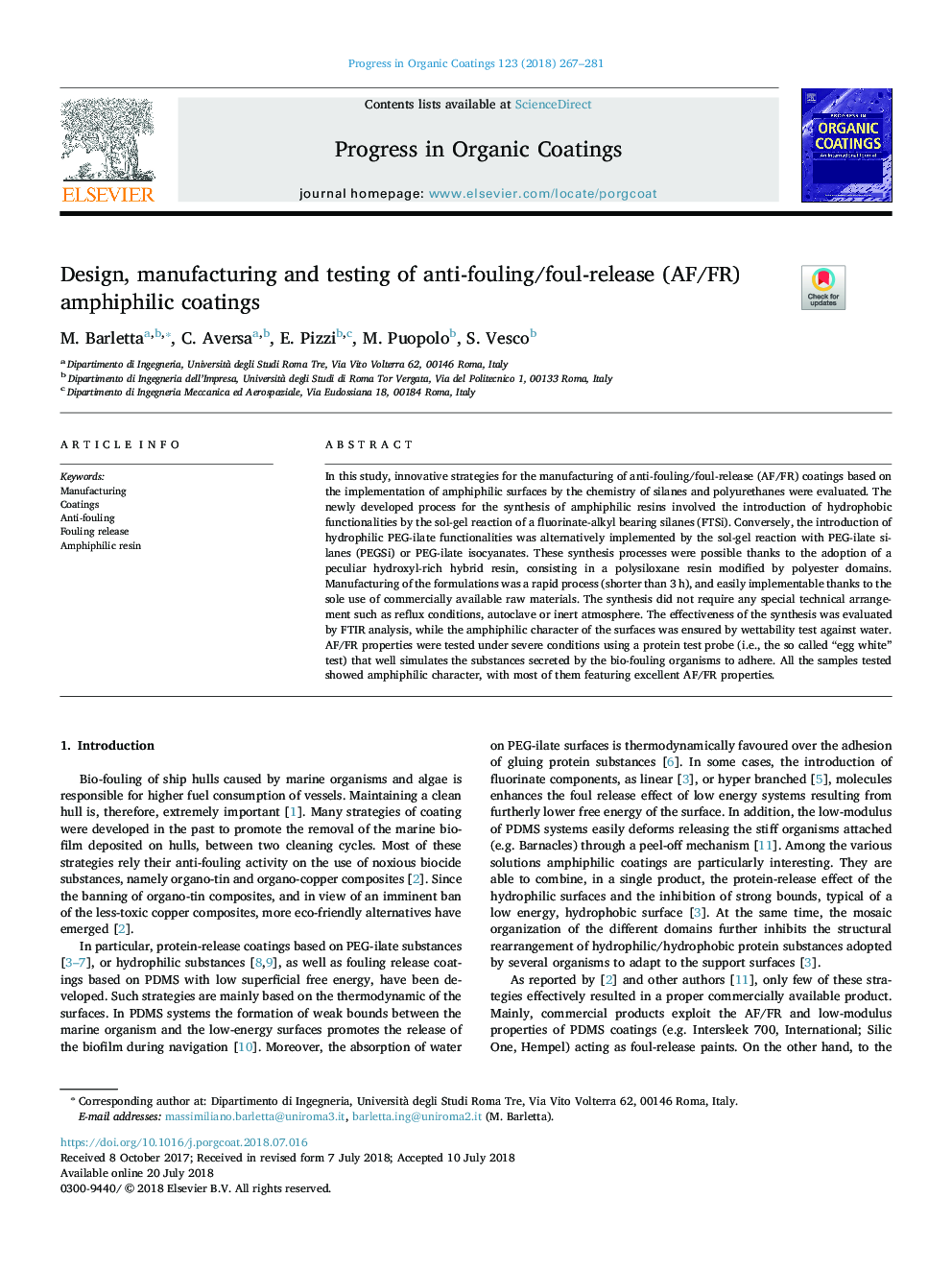| Article ID | Journal | Published Year | Pages | File Type |
|---|---|---|---|---|
| 7105398 | Progress in Organic Coatings | 2018 | 15 Pages |
Abstract
In this study, innovative strategies for the manufacturing of anti-fouling/foul-release (AF/FR) coatings based on the implementation of amphiphilic surfaces by the chemistry of silanes and polyurethanes were evaluated. The newly developed process for the synthesis of amphiphilic resins involved the introduction of hydrophobic functionalities by the sol-gel reaction of a fluorinate-alkyl bearing silanes (FTSi). Conversely, the introduction of hydrophilic PEG-ilate functionalities was alternatively implemented by the sol-gel reaction with PEG-ilate silanes (PEGSi) or PEG-ilate isocyanates. These synthesis processes were possible thanks to the adoption of a peculiar hydroxyl-rich hybrid resin, consisting in a polysiloxane resin modified by polyester domains. Manufacturing of the formulations was a rapid process (shorter than 3âh), and easily implementable thanks to the sole use of commercially available raw materials. The synthesis did not require any special technical arrangement such as reflux conditions, autoclave or inert atmosphere. The effectiveness of the synthesis was evaluated by FTIR analysis, while the amphiphilic character of the surfaces was ensured by wettability test against water. AF/FR properties were tested under severe conditions using a protein test probe (i.e., the so called “egg white” test) that well simulates the substances secreted by the bio-fouling organisms to adhere. All the samples tested showed amphiphilic character, with most of them featuring excellent AF/FR properties.
Related Topics
Physical Sciences and Engineering
Chemical Engineering
Process Chemistry and Technology
Authors
M. Barletta, C. Aversa, E. Pizzi, M. Puopolo, S. Vesco,
